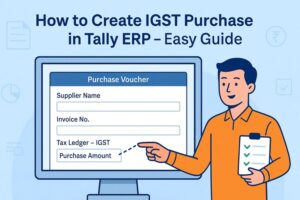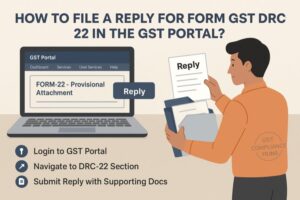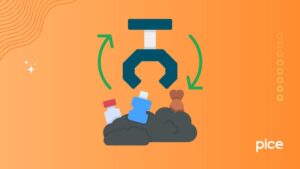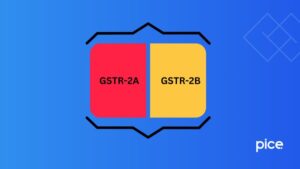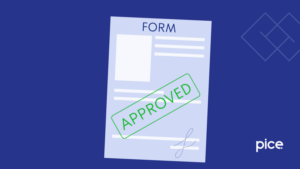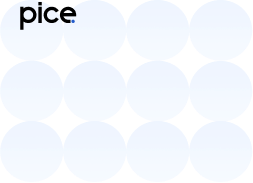A Guide on the Impact of GST on Pharmaceutical Industry in India
- 6 Feb 25
- 11 mins
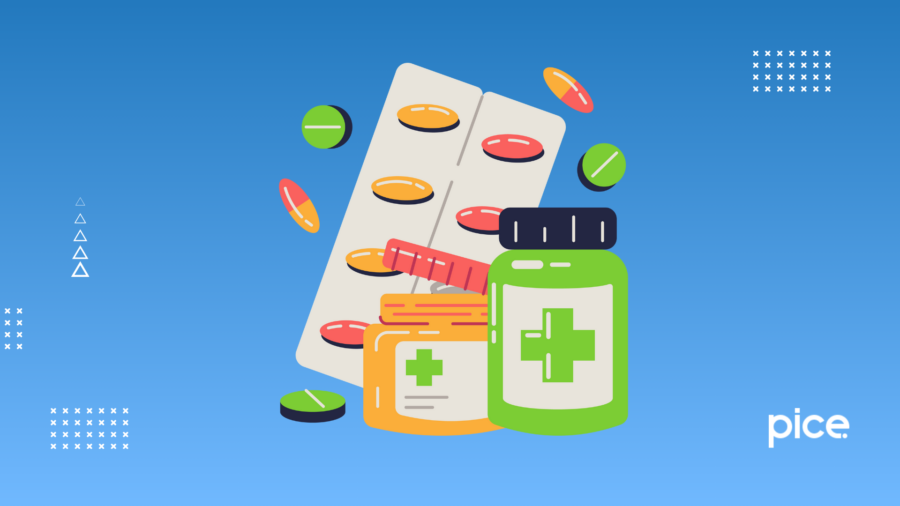
A Guide on the Impact of GST on Pharmaceutical Industry in India
- NIL GST Rate on Medicines and Medical Goods
- 5% GST Rate on Medicines and Medical Goods
- 12% GST Rate on Medicines and Medical Goods
- 18% GST Rate on Medicines and Medical Goods
- 28% GST Rate on Medicines and Medical Goods
- GST on Medical Services
- GST on Hospitalisation
- GST Impact on Medicines
- What Is the Value of Supply to Compute GST on Medicines?
- GST on the Import of Pharmaceuticals
- GST on Expired Medicines or the Return of Drugs
- Place of Supply with Regard to Certain Medical Services
- Conclusion
Key Takeaways
- GST streamlined pharma taxation by replacing multiple indirect taxes with four tax slabs (Nil, 5%, 12%, and 18%).
- Lower costs and better efficiency due to reduced cascading taxes and improved input tax credit benefits.
- Essential medicines and healthcare services enjoy exemptions or lower GST rates for affordability.
- Imports and expired medicine returns are subject to specific GST rules, including IGST and ITC adjustments.
- Pharma R&D and exports benefit from GST compliance, boosting global competitiveness.
India's pharmaceutical industry has earned global recognition for its resilience and innovation, particularly in the post-pandemic era. Known for providing affordable medicines and playing a crucial role in the global pharmaceutical supply chain, India continues to lead the sector.
Following the implementation of GST on pharmaceuticals and medical supplies, four types of taxes have been introduced: Nil, 5%, 12%, and 18%, replacing all indirect taxes. This blog explains into the impact of GST on pharmaceutical industry, covering aspects such as GST on medicines, medical services, medical equipment, hospitalization charges, and more.
NIL GST Rate on Medicines and Medical Goods
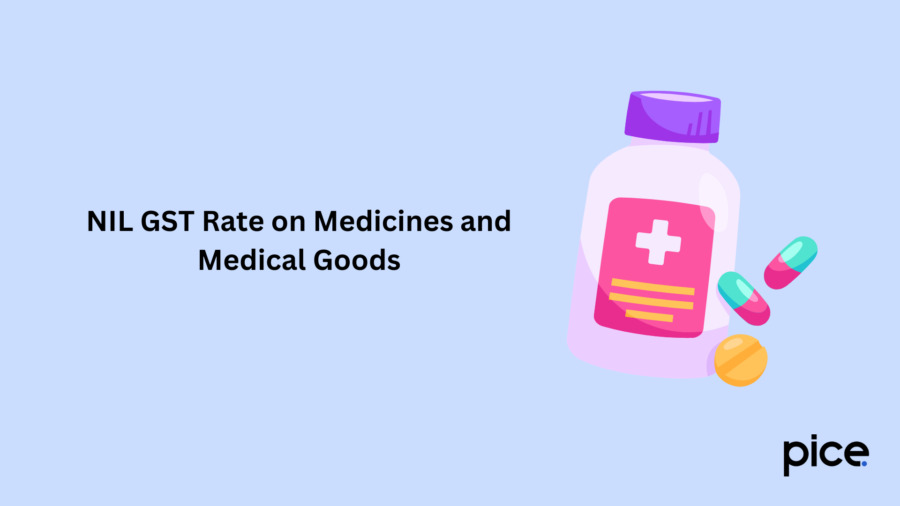
The following is a list of medicines and medical goods with a NIL GST tax rate:
- Human blood and its components, including by-products used in medical treatments
- Sanitary napkins and tampons
- All types of contraceptives
5% GST Rate on Medicines and Medical Goods
Here is a list of medical products which are subject to 5% GST. It is important to note that the following is not an exhaustive list:
- Insulin
- Cyclosporin
- Artificial kidneys
- Artificial limbs
- Oral rehydration solutions
- Human blood vaccines
- Vaccines for animal blood
- Desferrioxamine or deferiprone injections
- Diagnostic kits for detecting various types of hepatitis
- Non-branded medicaments used in biochemic systems
- Formulations created from bulk drugs listed under List 2 of central excise notification 12/2012, such as Pyrazinamide, Streptomycin, Quinine and Hydrocortisone, among 20+ other specified drugs
- Drugs, medicines, and their salts or esters, as well as diagnostic test kits specified under List 1 of central excise notification 12/2012, including items like Protamine, Penicillamine, Dopamine, BCG Vaccine, Influenza Vaccine, among 200+ other listed drugs
- Assistive devices and rehabilitation tools for persons with disabilities listed under List 3 of central excise notification 12/2012, such as braille writing devices, canes, electronic aids (e.g., sonic guides), braille paper, and cochlear implants, among 20+ other listed items
- Orthopaedic devices, including crutches, surgical belts, trusses, splints, and other fracture appliances, as well as prosthetic body parts
- Sterilized disposable dialyzers or micro barriers for artificial kidneys
- Components for wheelchairs, tricycles, braille equipment, crutches, walking frames, etc.
- Baby milk formulas
- COVID-19 diagnostic test kits
- Coronary stents and stent systems compatible with cardiac catheters
- Ostomy appliances
12% GST Rate on Medicines and Medical Goods
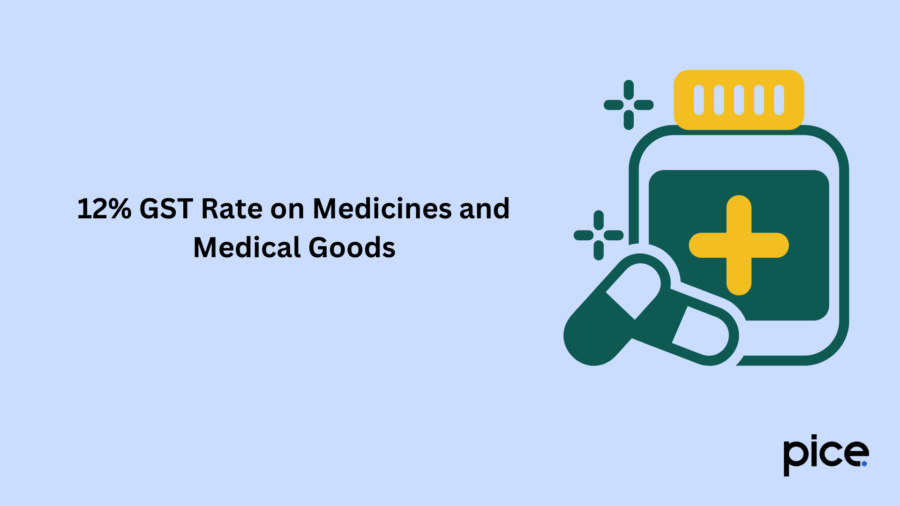
Here is a list of medical products subject to 12% GST. The following list is not exhaustive:
- Antisera, blood fractions, and other modified immunological products
- Animal blood fractions used for preventive, therapeutic, or diagnostic purposes
- Toxins, microorganism cultures (excluding yeasts), and similar items
- Rubber gloves for surgical or medical examinations
- Feeding bottles and their nipples
- Foods formulated for diabetics
- Tooth powder
- Medicaments containing two or more constituents mixed for therapeutic or preventive purposes (excluding items under headings 30.02, 30.05, and 30.06). This includes products from homoeopathic, ayurvedic products, siddha, unani, or biochemic systems, not in retail packaging or measured doses
- Surgical, dental, medical, or veterinary medicines, bandages, gauze, or similar products impregnated or coated with pharmaceutical substances for retail sale
- Medicaments (excluding items under headings 30.02, 30.05, and 30.06) made of mixed or unmixed products for therapeutic or preventive use, provided in measured doses or retail packaging. This includes homoeopathic medicine, ayurvedic medicines, siddha, unani, or biochemic products
- Pharmaceutical items specified in Note 4, such as sterile surgical catgut, sterile tissue adhesive plasters used for purposes like surgical wound closure, sterile laminaria, and sterile laminaria tents
- Breathing appliances and gas masks, excluding protective masks without replaceable filters or mechanical parts
- Mechano-therapy devices, psychological testing apparatus, massage machines, and equipment for ozone, oxygen, or artificial respiration therapies, as well as aerosol therapy machines
- Instruments and devices used in surgical, medical, dental yarns, or veterinary fields, including scintigraphic apparatus, electro-medical devices, and sight-testing equipment
- Glands and organs used for organo-therapeutic purposes and extracts of glands or secretions for similar use
- X-ray machines and other similar medical, surgical, dental, or veterinary furniture or equipment
- Contact lenses, corrective lenses, and spectacles
- Photographic films and X-ray plates for medical applications
- Enzymes and enzyme-based preparations
- Other life-saving drugs and medicines for personal use
- Medical-grade oxygen, hydrogen peroxide, and similar substances
- Blood glucose monitoring devices (glucometers) and test strips
18% GST Rate on Medicines and Medical Goods
Here are some medical products that attract an 18% GST rate. You must note that this is not a comprehensive list:
- Dental care products, including preparations for oral hygiene and dental floss, packaged for retail sale
- Nicotine-containing products designed for oral, transdermal, or other applications to aid in quitting tobacco use
- Furniture for medical, surgical, dental, or veterinary use, such as operating tables, hospital beds, examination tables with mechanical features, dentist chairs, and barber chairs
- Measuring instruments like infrared thermometers, pyrometers, barometers, psychrometers, and hygrometers
- Hygienic or pharmaceutical items such as pacifiers, hot water bottles, and ice packs
- Organic skin-cleaning products and preparations, with or without soap
- Razors and their blades
28% GST Rate on Medicines and Medical Goods
Medicines and pharmaceutical products are not subject to a 28% GST rate.
GST on Medical Services
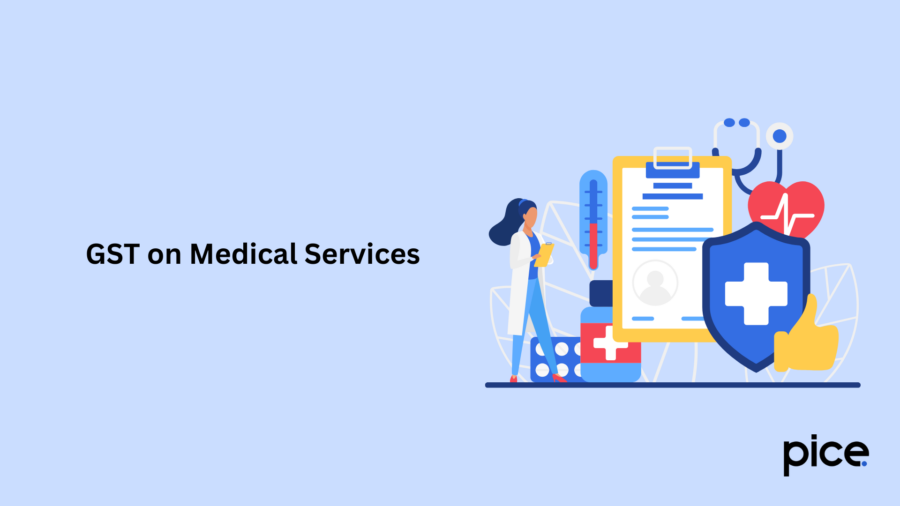
All hospital or clinical establishment room rents (excluding those in ICU, CCU, ICCU, or NICU) that exceed ₹5,000 per day are subject to a 5% GST without input tax credit, effective from 18th July 2022.
The following medical services are exempt from GST:
- Use of rooms in Intensive Care Units (ICU), Critical Care Units (CCU), Intensive Cardiac Care Units (ICCU), or Neonatal Intensive Care Units (NICU).
- Healthcare services provided by clinical establishments, authorised medical paramedics, or medical practitioners, except for room rentals (other than the above-mentioned) where charges do not exceed ₹5,000 per day.
- Transportation of patients via ambulance, excluding services mentioned above.
GST on Hospitalisation
In 2017, the Kerala Authority for Advance Ruling (AAR) determined that providing medicines, surgical items, implants, stents, and other consumables to patients during hospitalization qualifies as a composite supply and is exempt under Entry No. 74 of Notification 12/2017 - Central Tax (Rate), dated 28th June 2017. Similarly, the Tamil Nadu Authority for Advance Ruling issued a comparable decision in June 2022.
GST Impact on Medicines
Under the VAT system, medications and medical supplies faced cascading taxation, as both excise duty and VAT were levied on all healthcare industry products, including medicines. The implementation of GST has eliminated this issue for medicines and other healthcare items. For many lifesaving drugs, prices under GST have remained relatively unchanged.
This is because the earlier VAT rate of 4% on 65% of the MRP (which included additional excise duty) was replaced with a 5% GST rate, resulting in no significant change in MRP. For dietary supplements, the removal of excise duty has increased profitability and reduced prices, as these tax benefits are passed on to consumers.
Some additional positive impacts of GST on medicine prices include:
- Lower overall technology costs—Previously, healthcare sector machinery was highly expensive, and the duty paid on it could not be claimed as a tax credit. With GST, the IGST component is now eligible for the input tax credit, reducing the cost of medicines.
- Enhanced operational efficiency—Earlier, the pharmaceutical sector was subject to eight different taxes, leading to a cascading effect. GST has streamlined this by consolidating all taxes into one, eliminating the cascading tax burden, and optimizing the supply chain to boost efficiency.
What Is the Value of Supply to Compute GST on Medicines?
Under the GST tax regime, the transaction value refers to the value of the supply. It is the price paid or payable for the supply of goods or services, provided the supplier and recipient are not related, and the prices for medicines are the sole consideration for the supply.
- Discounts – According to Section 15(3) of the CGST Act, 2017, discounts can be excluded from the value of supply of medicines if they are provided before or during the supply and are reflected in the supply invoice.
- Free sample distribution – Input tax credit on free samples must be reversed since no tax is levied when these samples are distributed to physicians.
GST on the Import of Pharmaceuticals
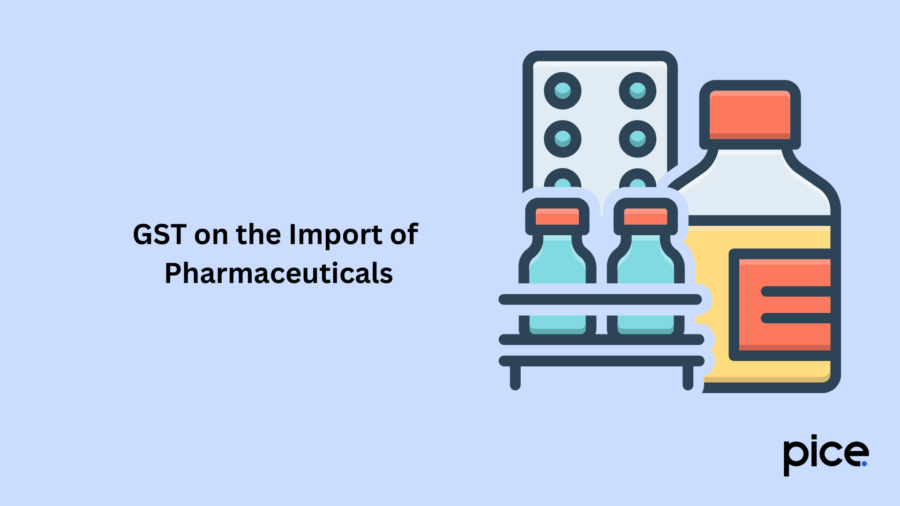
The import of medicines is subject to IGST and customs duty, with the following tax structure:
- Basic Customs Duty (BCD) – A basic customs duty of 10% is applied to the assessable value for customs purposes.
- Social Welfare Surcharge – Charged at 10% of the BCD.
- IGST – Applied at rates of 18%, 12%, or 5% on the total value, which includes the assessable value for customs duty, basic customs duty, and social welfare surcharge.
GST on Expired Medicines or the Return of Drugs
When medicines expire without being sold, they are returned to the manufacturer through the supply chain. Wholesalers or retailers can choose one of the following options:
- Treating the returned goods as a new supply – In this scenario, the wholesaler destroys the expired medicines, and the return is recorded as purchases by the wholesaler. The manufacturer must reverse the input tax credit (ITC) claimed on these goods since ITC cannot be availed on goods that are ultimately destroyed.
- Issuing a credit note for the returned goods – The supplier can adjust their tax liability only if the person returning the expired medicines has not claimed ITC. If ITC has already been claimed, it must be reversed.
Place of Supply with Regard to Certain Medical Services
Effective from 1 October 2019, the place of supply for services will be considered the location of the service recipient. This applies to the export of research and development services provided by individuals in the taxable territory to those in a non-taxable territory under a contractual agreement. These services specifically relate to the pharmaceutical companies and include the following:
- End-to-end development services
- Comprehensive discovery and development processes
- Analysis of the biological activity of innovative chemical or biological entities in laboratory-based assays
- Assessment of the effectiveness of novel chemical or biological entities using animal disease models
- Studies on the drug metabolism and pharmacokinetics of new chemical compounds
- Stability testing procedures
- Toxicity and safety evaluations
- Studies on bioavailability and bioequivalence
- Bio-analytical research activities
- Clinical trial execution
Conclusion
The impact of GST on the pharmaceutical industry has been significant, particularly on the supply chain. Previously, under the VAT regime, companies incurred a 2% Central State Tax (CST) on interstate transactions, prompting them to establish depots in each state or union territory to minimize tax liabilities.
With the introduction of GST on pharmaceutical products, the supply chain has become more efficient as companies shift to a hub-and-spoke model. This approach helps lower warehousing costs and maximizes the benefits of Input Tax Credit under GST compliance.
💡If you want to streamline your payment and make GST payments via credit card, consider using the PICE App. Explore the PICE App today and take your business to new heights.
 By
By 







